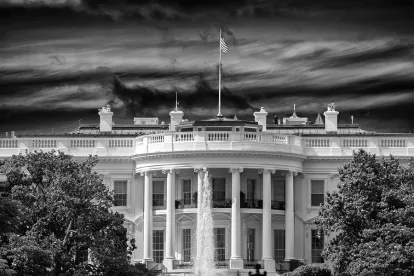On December 6, 2021, the White House (the “WH”) released the first United States Strategy on Countering Corruption (the “Strategy”) that sets the Biden-Harris Administration’s goals to tackle international corruption. Much of the Strategy remains currently aspirational and requires additional legislative and regulatory action to implement. Still, it signals the direction the Administration is looking to steer the resources of the federal government with respect to combating global corruption and implicates the whole of the financial industry. Here, we briefly summarize the background and some of the Strategy’s key points and initiatives.
Background
The Strategy is the product of a six-month process by the Administration’s national security team. In June 2021, the Administration declared the fight against corruption to be a “core” national security interest of the United States. It argued that “[c]orruption corrodes public trust[,]” that “acts of corruption sap between 2 and 5 percent from global gross domestic product[,]” and “threatens United States national security, economic equity, global anti-poverty and development efforts, and democracy itself.” Thus, the President directed the National Security Advisor to conduct an interagency review and prepare recommendations. The Strategy is the product of that review.
The Strategy also comes in the wake of new investigative reporting by the International Consortium of Investigative Journalists called the “Pandora Papers.” The report revealed the use of international financial system by politicians from over 100 countries to stash cash, avoid taxes, and in some cases, hide the proceeds of corrupt acts. It led to the impeachment of the Chilean president last month (though he was not removed). The report also showed how parts of the United States financial and corporate system could be misused, prompting bipartisan legislation to be introduced in Congress.
The Strategy
The Strategy outlines a whole-of-government approach and “places particular emphasis on better understanding and responding to the [corruption’s] transnational dimensions, including by taking additional steps to reduce the ability of corrupt actors to use the U.S. and international financial system to hide assets and launder the proceeds of corrupt acts.” It is comprised of five mutually-reinforcing Pillars. While some aspects of the Strategy are a restatement of efforts already underway across the federal government, others include seeking expanded authority, resources, and call for vigorous prosecutions.
Pillar One, Modernizing, coordinating, and resourcing U.S. Government efforts to fight corruption. This includes enhanced data gathering, inter-agency information sharing, creating anti-corruption task force at the Department of Commerce, and increasing law enforcement resources. Part of the Pillar is to provide the Financial Crimes Enforcement Network (“FinCEN”) with sufficient funding to build a new beneficial ownership data system, something the agency is already working on and required to do under the Anti-Money Laundering Act of 2020, which came into force earlier this year.
Pillar Two, Curbing illicit finance. The U.S. Government will seek to combat money laundering (including domestic AML/CFT regime), illicit trafficking, and other forms of criminal activity that enable global corruption by promulgating new regulations through the Notice and Comment process. To that end, FinCEN published a Notice of Proposed Rulemaking for regulations implementing the Corporate Transparency Act the day after the Administration published the Strategy. In the near future, the federal government will move with implementing regulations of Section 885 of FY21 NDAA (requiring prospective Federal contractors and grantees to disclose beneficial ownership). The Treasury Department will also issue regulations that will include reporting requirements for those with valuable information regarding real estate transactions and reexamine the 2015 Notice of Proposed Rule Making prescribing minimum standards for anti-money laundering programs and suspicious activity reporting requirements for certain investment advisers. Finally, the Administration will seek additional authorities to go after so called “gatekeepers” such as law firms, accountants, and other facilitators of corruption.
Pillar Three, Holding corrupt actors accountable. The Strategy has indicated law enforcement will focus on “vigorous” FCPA enforcement and will utilize Section 314 of the USA PATRIOT Act, which provides a mechanism for law enforcement to engage with points of contact at financial institutions to locate accounts and transactions of persons who may be involved in money laundering or terrorism financing. Furthermore, the Treasury Department will set up a Kleptocracy Asset Recovery Rewards Program while the State Department will launch an interagency initiative “Democracies Against Safe Havens Initiative.”
Pillars Four and Five, diplomatic and multilateral engagements. A prominent element throughout the Strategy is the Administration’s focus to engage diplomatically on the international stage to bolster anti-corruption institutions and efforts. The Administration will elevate anti-corruption as a diplomatic priority, expanding anti-corruption focused foreign assistance, building/empowering civil society. From a multilateral standpoint, the Administration will seek to engage with organizations like the G20, G7, OECD, OAS, UN.



 />i
/>i

